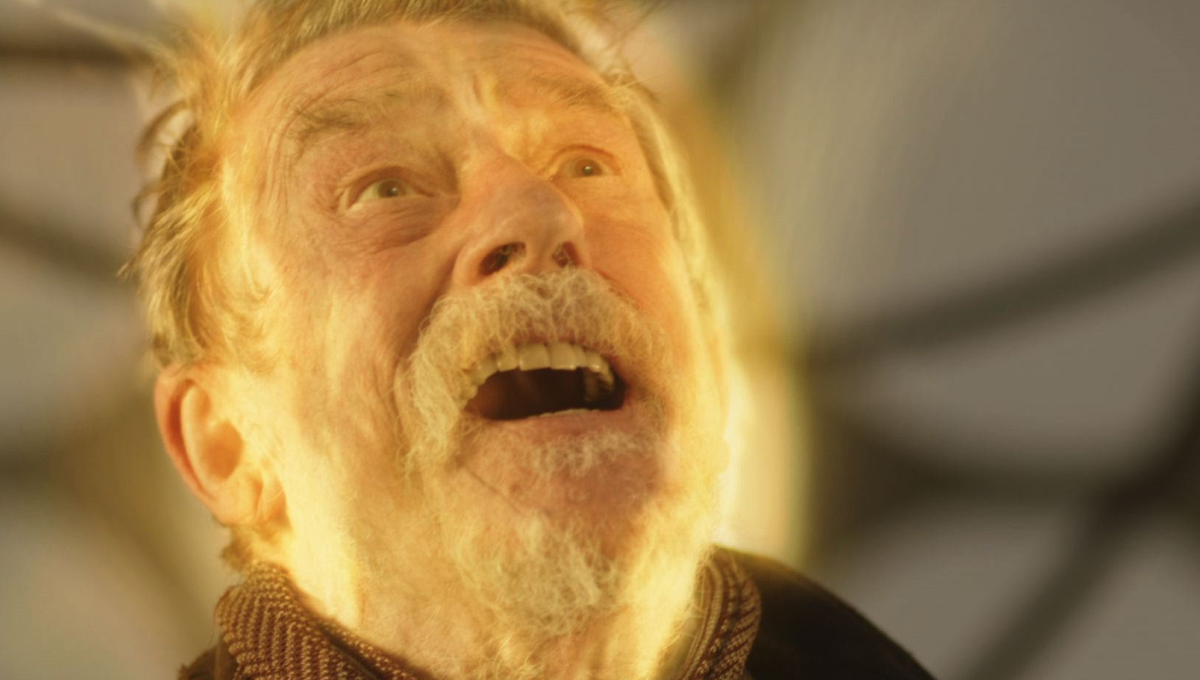There have been many Doctor Who regenerations over the last 58 years. Ever since William Hartnell collapsed in the closing moments of ‘The Tenth Planet,’ audiences have grown used to the fact that – every once in a while – the incumbent Time Lord will hang up their sonic screwdriver and move onto pastures new.

In fact, the concept of regeneration is almost as key to the series as the TARDIS, the Daleks, or even the multi-coloured scarf. Whenever an actor takes up the role, they do so knowing that – at some point in the future – they will keel over and morph into a new body, leaving “some new man” (or woman) to take on the mantle.
But as traditional as Doctor Who regenerations have become, there are some Doctors who never officially passed the baton. That is to say, there are some actors who vacated the role without ever filming their regeneration scenes, for various reasons.
For example, when the Second Doctor Patrick Troughton died at the end of ‘The War Games,’ the Third Doctor had yet to be cast. There was also some uncertainty as to whether the series was going to continue; at one point, serious consideration was given to cancelling Doctor Who after the 1969 season.
Because of this, viewers never got the opportunity to witness Patrick Troughton morph into Jon Pertwee. He was last seen tumbling into a vortex, screaming, and wasn’t seen again until the start of the next story ‘Spearhead from Space,’ in which he emerged from the TARDIS with a new body.
Similarly, some later Doctor Who regenerations faced logistical problems. In 1986, the incumbent Time Lord Colin Baker declined to film the transition into the Seventh Doctor Sylvester McCoy. So instead, the production team dressed McCoy in a blonde wig and laid him face-down on the TARDIS floor. When his body was rolled over, the Sixth Doctor’s face was immediately blurred by a swirling regeneration effect, before fading into that of a new man.
Indeed, this was objectively one of the more ‘rushed’ Doctor Who regenerations, in that it hadn’t been planned very far in advance. 1986’s final story ‘The Trial of a Time Lord’ ended with the Sixth Doctor taking off in the TARDIS with his new companion Mel in tow. But shortly after this, Colin Baker was fired by the BBC, and the production team had to scramble to shoot a linking scene for the opening moments of the next adventure ‘Time and the Rani.’
And whilst Sylvester McCoy had the opportunity to film his regeneration into the Eighth Doctor Paul McGann (in 1996’s TV movie) it wasn’t long before there was another break in the cycle. ‘The TV Movie’ ends with the Eighth Doctor taking off in the TARDIS, and it would be nine years before it next appeared on people’s TV screens. Only when it did, it wouldn’t have the Eighth Doctor at the controls.
This is because the Eighth Doctor actually regenerated off-screen, so when the series returned in 2005, it had a new man piloting the TARDIS. Namely, the Ninth Doctor played by Christopher Eccleston. And although nothing was specifically stated at the time, it was assumed that this new Time Lord followed on directly from the Paul McGann incarnation.
Although you’ve probably realised by now that Doctor Who regenerations can be a little complicated. Indeed, in the 2013 story ‘The Day of the Doctor,’ it was revealed that there had, in fact, been another Time Lord that few people knew about. Known as the War Doctor, this incarnation was played by John Hurt, and it was revealed that he was the Doctor that filled the gap between Paul McGann and Christopher Eccleston. This was further illustrated in an online minisode titled ‘The Night of the Doctor,’ in which we see Paul McGann semi-voluntarily regenerate himself into John Hurt.
And if you’ve been following, you’ll have realised by now that Hurt’s Doctor also needs to regenerate into Christopher Eccleston, yes? Alas, Christopher Eccleston was unavailable for this critical scene in ‘The Day of the Doctor’ so, once again, viewers never got to see the full body transition. (Although, if you look closely, you might see the slightest hint of Eccleston’s eyes, as John Hurt fades away…)
And speaking of Eccleston, his death scene was another of those Doctor Who regenerations that never actually happened. It’s unclear why the actor wasn’t on set for his transition into David Tennant at the end of ‘The Parting of the Ways,’ but it was another standalone affair. Similar to the Colin Baker / Sylvester McCoy situation, David Tennant was dressed up as his predecessor, disguised with a skull-cap and some fiery CGI. As the regeneration takes place, the Doctor’s new hair suddenly sprouts, and we cut wide to reveal his brand new body.
All of which begs the question: If Patrick Troughton, Colin Baker and Christopher Eccleston never actually filmed their regeneration scenes, are they still technically the Doctor?
The debate starts here…

Doctor Who customisable shoulder bag – order now from the Lovarzi shop!
Shop on Amazon
Latest posts…
- Doctor Who stories: Looking back at the Western adventures
- The top 5 silliest Doctor Who rumours
- The Reality War: The story behind the Fifteenth Doctor’s regeneration
- What would a Doctor Who missing episodes drama be like?
- Wish World: Another alternate reality story for the Doctor


I had always wondered whether, because the Time Lords forced Patrick Troughton’s Doctor’s regeneration on him, it actually counts, usually the incumbent Doctor regenerates a result of impending death, Patrick Troughton’s regeneration was forced on him as a precursor to his exile.